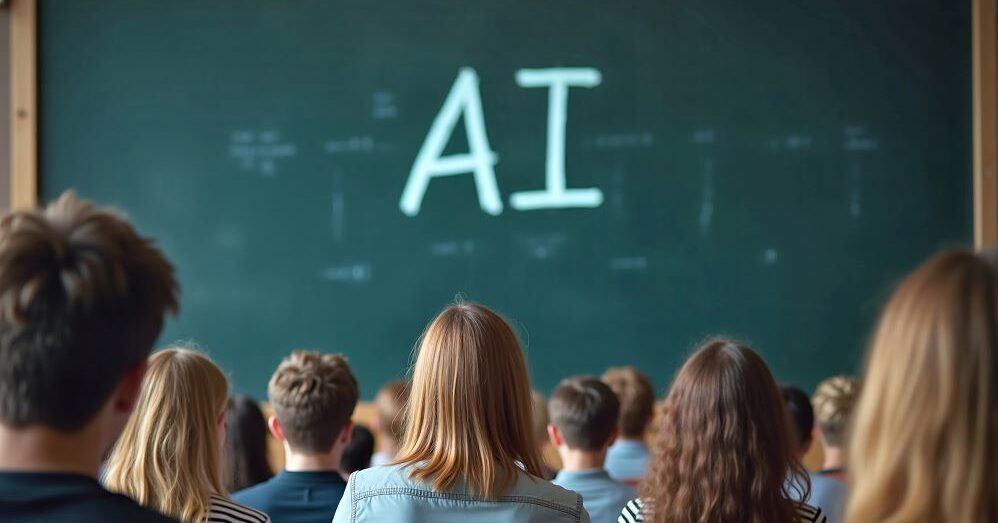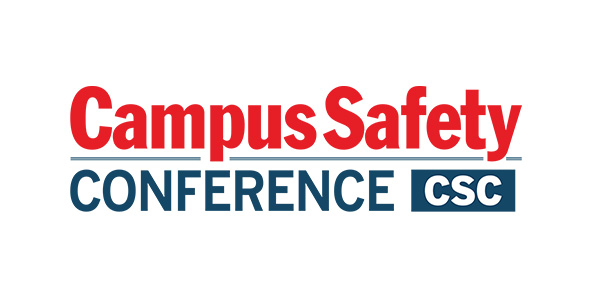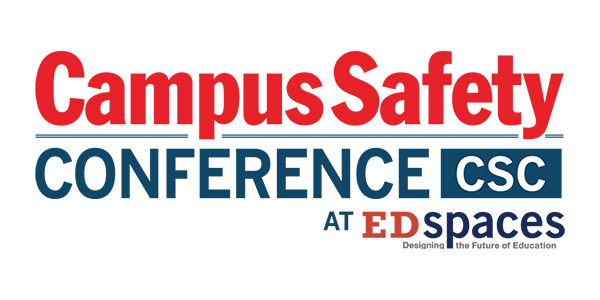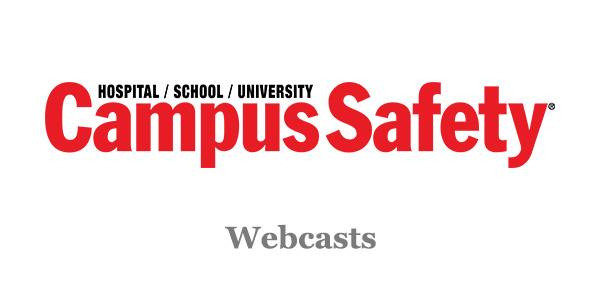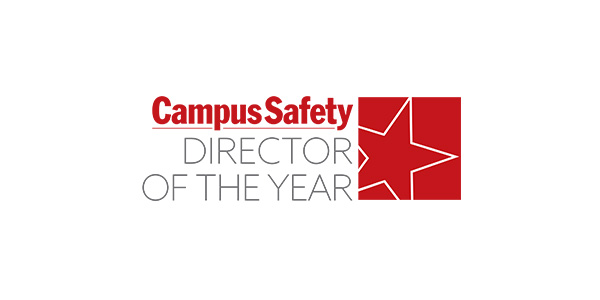A scuffle breaks out in a school corridor, and AI-powered video analytics immediately detect the unusual movement patterns and alert administrators before the situation escalates. Meanwhile, across campus, an AI system flags an unrecognized vehicle that’s been parked in the faculty lot for an unusual length of time. Both situations get immediate human attention because artificial intelligence acted as an early warning system.
These examples aren’t science fiction. Technology solutions like this are already in operation at schools and universities across the country. Educational institutions are moving beyond traditional reactive security measures to embrace AI-powered systems that proactively identify threats, automate compliance processes and optimize campus operations.
Related Article: How AI Analytics Transform Video Surveillance to a Real-Time Tool
This transformation is enabled by open platform video management software (VMS) technologies that allow administrators to deploy customized artificial intelligence (AI) solutions fitting their unique needs, budgets and regulatory requirements. Rather than forcing schools into one-size-fits-all approaches, these flexible systems adapt to everything from small rural districts to major research universities.
What makes this shift truly significant is that AI isn’t replacing human judgment. It’s amplifying the ability of administrators, security staff and teachers to keep students safe while managing increasingly complex security and compliance requirements with limited resources.
From Reactive Security to Proactive Protection
Walk onto most school campuses today and you’ll find basic video security systems installed primarily for incident review after problems occur. Think of it as having an excellent rearview mirror but no early warning system for what’s ahead.
AI-powered video analytic tools flip this approach entirely, transforming passive recording into active protection that can prevent incidents before they intensify. These systems use automated anomaly detection to learn what normal looks like on any given campus, then flag anything that doesn’t fit the established patterns, making educational settings particularly well-suited for this technology due to their predictable routines.
AI-powered analytics can recognize when someone is moving against normal traffic patterns, when a person appears to be in distress, or when objects are left behind in sensitive areas. The moment these situations are detected, the system alerts appropriate personnel through desktop computers, smartphones or other mobile devices. No more waiting for someone to review hours of video after an incident has already occurred.
Related Article: How Artificial Intelligence Transforms Hospital Safety and Operations
Another real breakthrough comes from integrating specialized sensors that extend monitoring into areas where traditional cameras simply can’t go. Multi-sensor devices now offer capabilities that would have seemed impossible just a few years ago, fundamentally changing how schools can monitor and protect their campuses.
Smart Audio Analytics Enhance Campus Safety Detection
Smart audio analytics represent one of the most significant advances in campus safety technology. These systems can detect raised voices, breaking glass, gunshots or specific keywords associated with distress or bullying incidents. Importantly, these systems don’t record conversations or violate privacy. They listen for specific distress signals that warrant immediate attention, then alert staff while maintaining student confidentiality.
Smart keyword detection technology takes this concept further by recognizing simple, intuitive phrases that people naturally say during distress situations. Rather than requiring students to remember complex emergency codes, these systems respond to natural language like “help me” or “stop it.” Some systems can respond to keywords in more than 20 languages, ensuring students who speak different languages can still get help when they need it most. Beyond automated detection, two-way audio capabilities allow human operators to make direct announcements when situations require immediate intervention or reassurance.
Vape Detection Technology Addresses Policy Violations
Vape detection technology also addresses what’s become a massive challenge for educators nationwide. Traditional detection methods require staff to physically patrol areas like bathrooms and locker rooms, which isn’t practical, effective or comfortable for anyone involved. Smart sensors solve this problem by distinguishing between different types of substances, detecting not just nicotine vaping but also THC and other concerning emissions.
Related Article: Addressing the School E-Cigarette and Vaping Epidemic
These systems monitor air quality continuously and alert administrators to potential policy violations in real time. They learn about their environment over time, reducing false alarms while maintaining sensitivity to actual violations. Some can even detect attempts to mask odors, which often indicates students know they’re breaking rules and are trying to hide the evidence.
What makes this transformation truly powerful is how open platform VMS can bring together all these diverse data sources, including cameras, sensors, access control systems and analytic data, into a comprehensive, unified system. Rather than managing separate, disconnected security tools, administrators gain a single interface that pulls information from multiple sources to provide complete situational awareness. This integration maximizes both efficiency and effectiveness, allowing security personnel to see the full picture and respond appropriately to any situation.
AI Systems Navigate Complex Educational Compliance Requirements
The rapid advancement of AI capabilities has prompted governments worldwide to develop comprehensive regulatory frameworks. The European Union has taken the lead with its AI Act, categorizing AI systems based on their potential risks and establishing strict guidelines for high-risk applications. The United States is following suit, with recent executive orders focusing on safe, secure, and trustworthy AI use.
For educational institutions, these broader AI governance trends intersect with existing privacy regulations that directly impact campus operations. The regulations emphasize the importance of data protection, requiring organizations to implement strict controls over how information is collected, stored, and used within AI-powered security systems. And beyond federal and state laws, individual educational institutions develop their own policies to govern the use of security systems.
AI systems can simplify compliance in these areas by automating policy enforcement and generating audit trails. Open platform video management allows administrators to configure user access, retention schedules and data handling policies that automatically comply with relevant regulations. Systems can delete video information containing student data after specified periods, helping ensure FERPA and other compliance measures without manual intervention.
The flexibility of open platforms becomes important when dealing with varying regulatory requirements across jurisdictions. A school district in Illinois faces different biometric privacy requirements than one in Texas or California. The same core system can enforce facial recognition restrictions where legally required while enabling those capabilities where permitted.
Related Article: When the Alarm Is Real, But the Threat Isn’t: How AI Can Help Schools Respond Smarter to Swatting
And when new privacy laws take effect, schools with flexible systems can adjust policies through software configuration rather than replacing entire infrastructures. Cloud integration amplifies these capabilities by leveraging the robust security infrastructure of major cloud providers, which undergo independent compliance audits and offer pre-built templates for compliant architectures.
Under a shared responsibility model, cloud providers secure the underlying infrastructure while schools control their specific data handling policies and access controls. This allows educational institutions to benefit from enterprise-grade security capabilities without requiring massive internal IT investments or specialized compliance expertise.
AI Applications Optimize Educational Operations Beyond Security
Students learn better in well-managed environments, and AI applications can extend beyond security to enhance operational efficiency across educational facilities. Smart systems provide data-driven insights that transform how schools allocate resources, maintain facilities and optimize daily operations.
Educational institutions face constant pressure to do more with limited budgets while maintaining high standards. AI-powered analytics provide visibility into how campus resources are actually being used rather than relying on assumptions or outdated information.
Video analytics can reveal patterns in how classrooms, laboratories and common areas are used throughout the day and across academic terms. This information proves invaluable for scheduling decisions, budget planning and facility development. These operational insights manifest in key areas that directly impact educational effectiveness.
- Facility optimization is achieved through intelligent monitoring of space utilization, energy consumption and maintenance needs that prevent costly emergency repairs while ensuring optimal learning conditions.
- Resource management improves via automated tracking of valuable equipment and supplies, reducing loss and ensuring critical materials are available when needed.
- Operational efficiency increases by analyzing traffic flow patterns, identifying bottlenecks and optimizing everything from parking management to emergency vehicle access.
- Predictive maintenance capabilities identify potential issues with HVAC, lighting and other building systems before they disrupt learning environments or require expensive interventions.
These insights extend beyond cost savings to directly support the educational mission. When systems work properly and technology is available when needed, teachers can focus on instruction rather than troubleshooting problems. For larger institutions, understanding campus logistics enables better planning for construction projects and emergency response procedures.
Open Platform Architecture Provides Educational AI Deployment Advantages
The most successful educational AI deployments share a common foundation: open platform architectures that provide flexibility to integrate best-of-breed solutions from multiple vendors. Open platform video management software serves as the central hub connecting various smart devices, analytics tools and campus systems through standardized interfaces.
This approach offers several critical advantages that directly impact educational institutions’ bottom lines and operational effectiveness.
- Vendor flexibility prevents lock-in, allowing schools to select the most appropriate and cost-effective solutions for their specific needs rather than being constrained by single-vendor ecosystems. A small rural district might need basic vape detection and emergency alert capabilities, while a large university requires sophisticated behavioral analytics and integration with existing campus safety systems.
- Scalable deployment supports flexible models from fully on-premises systems to hybrid cloud architectures to complete cloud-based solutions, enabling schools to scale based on actual needs and available budgets.
- Future-proofing ensures new technologies and capabilities can be integrated as they become available, adapting to emerging requirements without requiring complete infrastructure replacement.
- Cost management through cloud connectivity eliminates large upfront capital expenditures, allowing schools to access enterprise-grade security capabilities through operational budgets rather than major capital projects. This flexibility proves particularly valuable for educational institutions operating under tight budget constraints.
Cloud Connectivity Transforms Educational Institution Capabilities
Cloud connectivity through open platforms proves particularly transformative for educational institutions with limited IT resources. Hybrid approaches combine on-premises equipment with cloud resources, offering scalability without abandoning existing investments. Flexible payment models allow schools to access advanced AI analytics, behavioral detection algorithms, and sophisticated security capabilities without the financial burden of traditional capital expenditures.
Perhaps most importantly, cloud connectivity enables enhanced data sharing with first responders during emergencies. The ability to instantly provide video feeds and sensor data to emergency personnel can significantly improve response times and outcomes during critical situations by giving responders vital situational awareness before they arrive on scene.
Comprehensive School Safety Strategies Require Balanced Approaches
Technology alone doesn’t create safe schools. The most effective safety programs combine technology with thoughtful policies, staff training, and community engagement.
Related Article: Poor Policies and Over-Reliance on AI Can Sabotage Your Security Technology’s Potential
Schools must carefully consider privacy implications when deploying AI systems, including obtaining necessary permissions and ensuring ethical use. And there needs to be open and transparent communication with students, parents and staff about security technology in order to build trust and community support. AI systems are never a replacement for human judgment. Security staff, administrators and teachers remain essential for interpreting alerts and responding appropriately.
While institutions deploying smart security systems report measurable improvements including faster emergency response times and improved resource use, the goal extends beyond having the latest technology. It’s about creating environments where learning can flourish because everyone feels secure and protected.
Barry Norton is a Fellow with Milestone Systems.
NOTE: The views expressed by guest bloggers and contributors are those of the authors and do not necessarily represent the views of, and should not be attributed to, Campus Safety.

